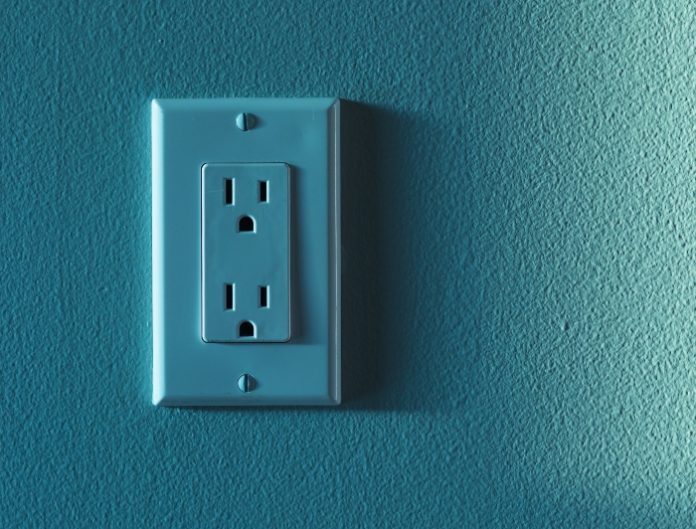Do you have an outlet that suddenly stopped working? Before you start messing with your breaker switches and fuses, try figuring out why it happened. There are some simple DIY solutions you can try before calling on professional help. And we hope that our article will help you get the most out of these solutions.
Safety First: Essential Precautions
Working with electricity can be dangerous. Always follow these precautions:
- Turn off the power at the circuit breaker before attempting any repair.
- Use a non-contact voltage tester to confirm that no electricity is flowing to the outlet.
- Wear insulated gloves and avoid working in wet areas.
- If you are unsure or encounter burnt wiring, seek professional help immediately.
Types of Electrical Outlet Issues
Before repairing an outlet, identify the problem. Common issues include:
- Loose or sunken outlets: Often caused by repeated plugging/unplugging of devices.
- Burnt or damaged outlets: Signs of overheating or electrical faults.
- Tripped GFCI outlets: GFCI outlets protect against electrical shock and may stop working after a short or overload.
- Dead outlets: Outlets that don’t provide power due to wiring faults, tripped breakers, or internal damage.
How to Identify the Problem
Do you have a light switch or an outlet that seems completely inoperative? We bet you’ve already checked your breaker box or fuses that proved to be just fine. And now you’re close to calling a professional who can quickly help you out in your electrical predicament. There are many reliable electrical companies rendering high-quality services to communities. So, you might want to contact experienced electricians and get your light switch or outlet resuscitated in the blink of an eye. But before that, you may want to troubleshoot your dead outlet and try to figure out the underlying causes of the problem you’re experiencing.
First things first, check your GFCI outlets. They are special outlets that have built-in circuit breaker protection. If something happens down the line like a short or overload, it will cause that to break, and then all the outlets beyond that will stop working. Sometimes, it’s as easy as pressing the button to reset your GFCI and you’re good to go.
If you reset your GFCI only to find out that the problem still persists, check your electrical panel to see if it is a tripped circuit breaker that causes the problem. If you discover that one of your breaker handles doesn’t line up with the rest, make sure to turn it back on. To do it, firmly push the breaker into the off position and then back on. If it continues to trip, you will know you have a short in the line. You can go around and check all the receptacles, lights, and switches for any loose connections and wires. But that will definitely be a big job. So, the wise thing to do is to seek professional help. You can simply google something like “lamp repair NYC,” “socket repair NYC,” or “professional electrical services NYC” and find the best electrician that will do the difficult job for you.
But what if there’s nothing wrong with your electrical system? Will you be able to fix your troublesome outlet yourself? Let’s find out!
How to Fix a Loose or Sunken Outlet
Tightening a loose outlet is commonly considered a no-brainer. With the repetitive plugging and unplugging in of electronics, outlets can get loose over time. But before you grab a screwdriver and start tightening your outlet, make sure electricity has been turned off at the breaker. Take advantage of a non-contact voltage detector, a useful tool wherein you can confirm that the electricity for the outlet that needs fixing is off.
Once the breaker switch has been turned off, proceed to remove the cover plate. Use the flathead screwdriver to remove each screw that keeps the cover plate affixed to the wall. Upon removing your plate, you’ll notice two brackets—one is on top and another is on bottom. Both brackets are held in by head screws. Check if both brackets are flush with the wall. If your outlet is loose, chances are at least one is not. So, what you need to do is tighten up the culprit. Make sure both brackets are tightened and flush with the wall. That should give you the additional stability you’re looking for.
It’s about time you put the cover plate back on. Make sure the plate is tightened firmly. Once you’re done, check if the problem has been resolved.
How to Replace an Outlet
Need to replace your wall outlet or socket? You can do it yourself by following a few simple tips.
First and foremost, turn off the power to the socket you’re planning on removing. Double-check the power with a voltage tester before you start doing anything with your outlet. Then unscrew the cover plate of your old outlet and remove the mounting screws. Once you’ve got your socket open, undo the wires. Inside your wall outlet, you’ll see three wires: a neutral, an earth, and a live. Take off the socket wall covers. On the back side you’ll see each one of the sockets has been marked.
Once the cables are securely fixed into the socket, push the socket back into position and secure the fastening screws. Make sure that the wall outlet is securely mounted to the wall and proceed to put on the covers.
After putting the outlet back in, turn the power back on. That’s all that’s involved in replacing or upgrading your wall outlet.
GFCI Outlet Repair
For GFCI outlet repair:
- Press the reset button to restore power if the outlet has tripped.
- Check downstream outlets connected to the same circuit.
- If resetting fails or the outlet trips repeatedly, replace the GFCI outlet.
Troubleshooting Dead Outlets
Dead outlet troubleshooting steps:
- Confirm the breaker is on.
- Test the outlet with a voltage tester.
- Check for loose wiring inside the outlet box.
- Inspect for signs of damage or burn marks.
- Replace the outlet if necessary, following the safety guidelines above.
Please note, if you feel uncomfortable doing any kind of electrical repair, don’t hesitate to contact a qualified electrician that can pinpoint the electrical problem and help you address it in a timely manner.
FAQs:
- How do I fix a loose electrical outlet?
Turn off the power at the breaker and confirm with a voltage tester. Remove the outlet cover plate and tighten the mounting brackets holding the outlet in place. Reattach the cover plate and restore power to test the outlet. - What should I do if a GFCI outlet keeps tripping?
Press the reset button on the GFCI outlet. If it trips repeatedly, check other outlets on the same circuit for wiring issues. Replace the GFCI outlet if necessary and consult a professional electrician if the problem persists. - How can I troubleshoot a dead outlet?
Check that the circuit breaker is on. Test the outlet with a voltage tester. Inspect wiring for loose connections or damage. If the outlet shows no voltage or signs of burning, replace it safely following proper procedures. - Is it safe to repair an electrical outlet myself?
Simple repairs like tightening a loose outlet or replacing a standard socket are safe if the power is turned off and proper tools are used. For burnt outlets, repeated GFCI trips, or complex wiring problems, hire a professional electrician. - What are common electrical outlet problems?
Loose wiring, burnt outlets, tripped GFCI outlets, and outdated or damaged sockets are common issues that can cause an outlet to malfunction.
Find a Home-Based Business to Start-Up >>> Hundreds of Business Listings.

















































